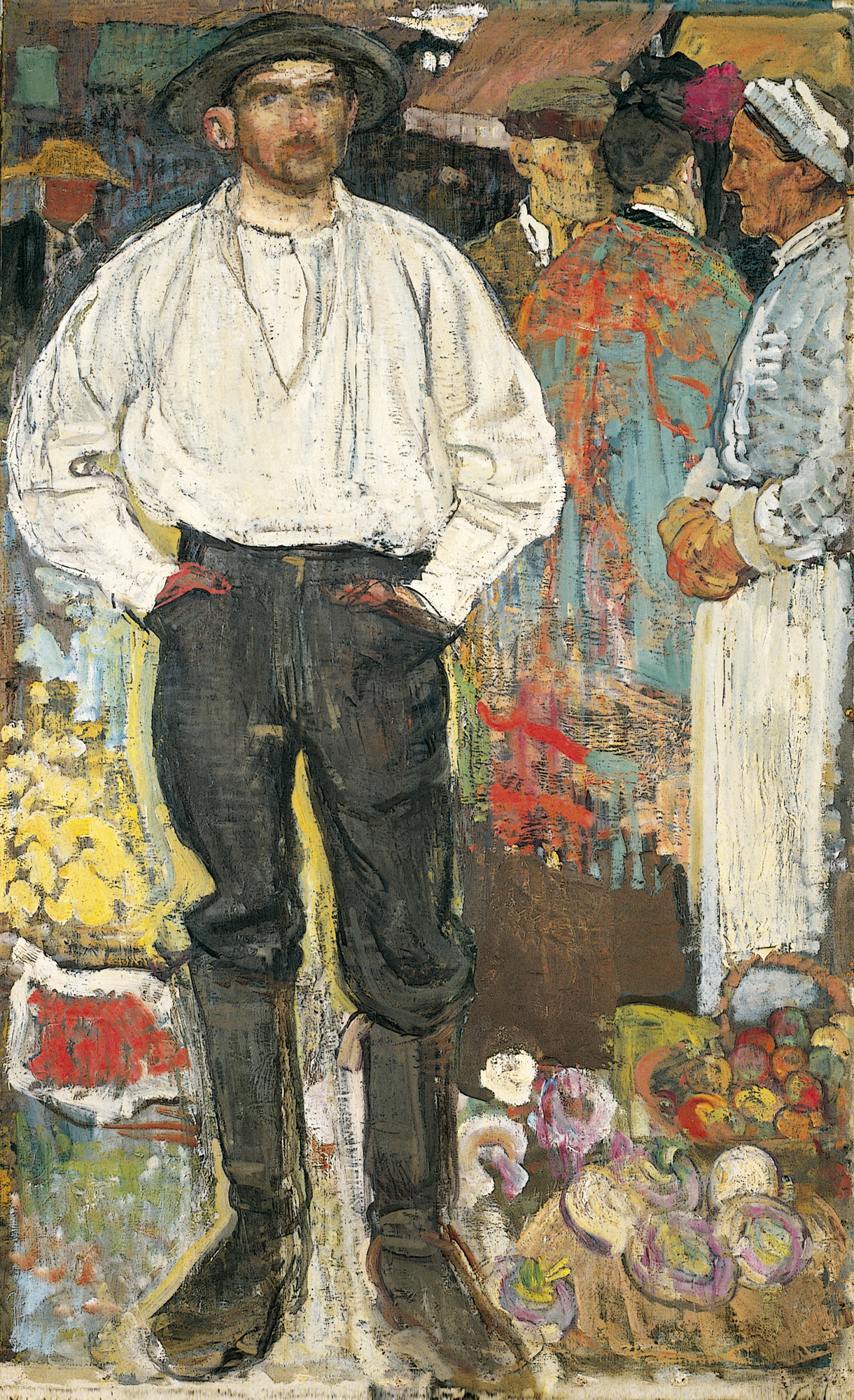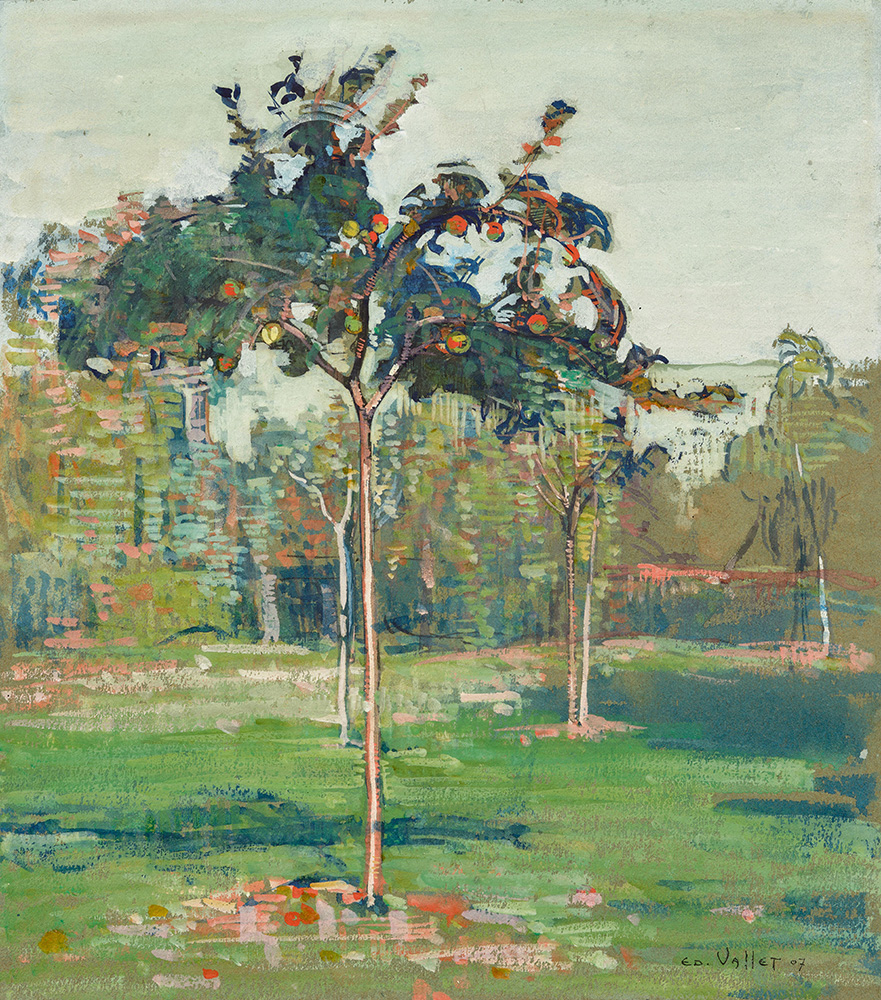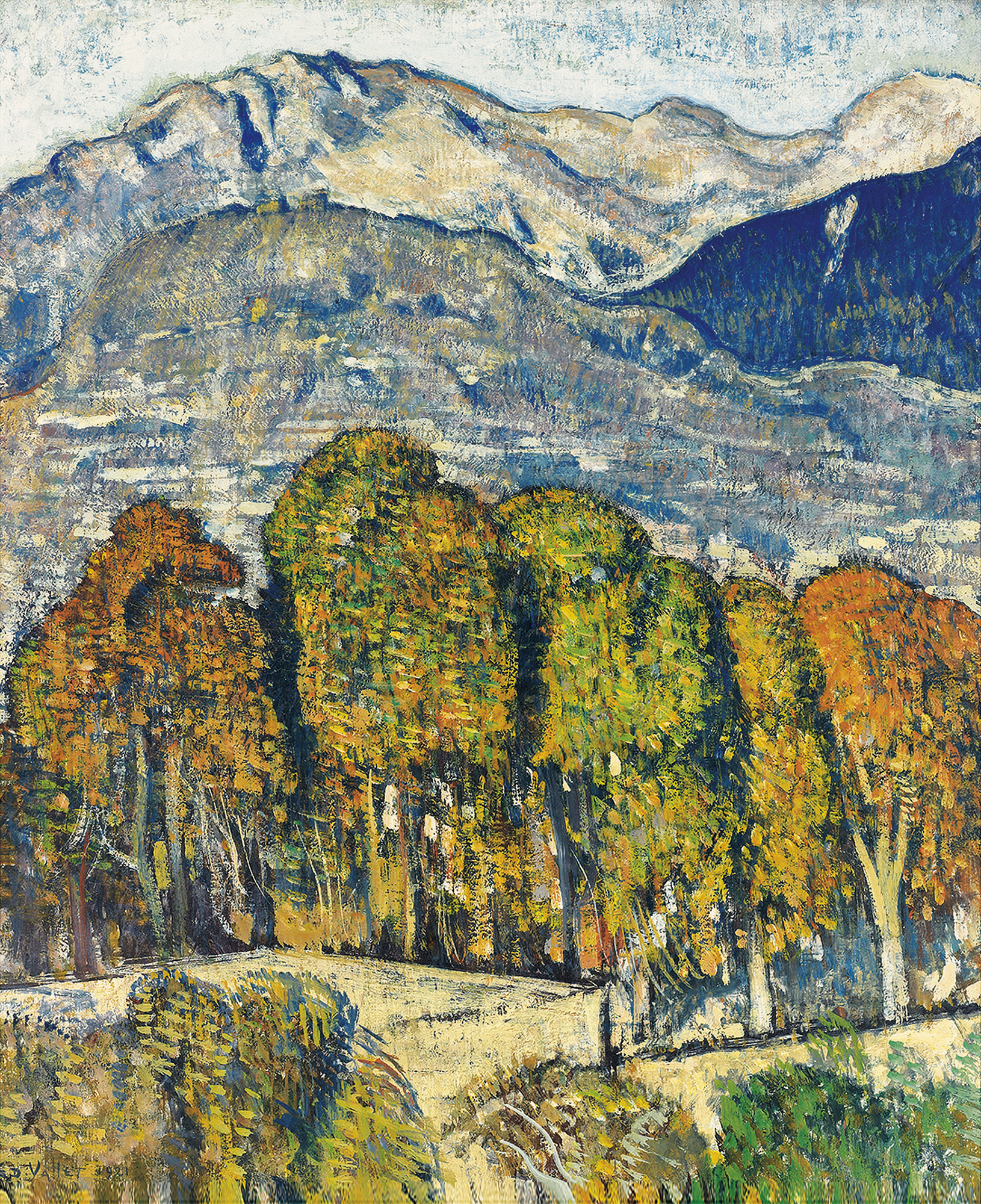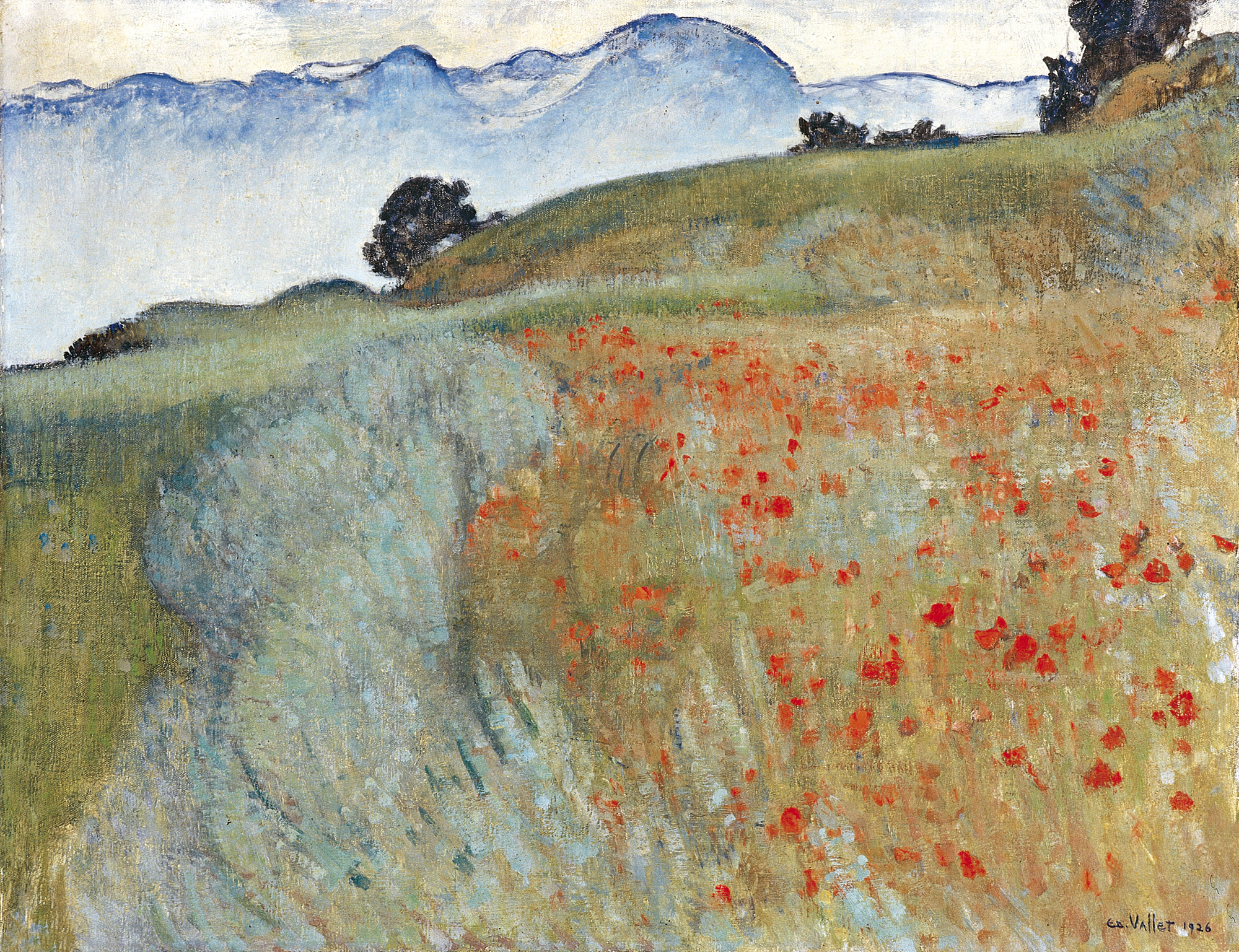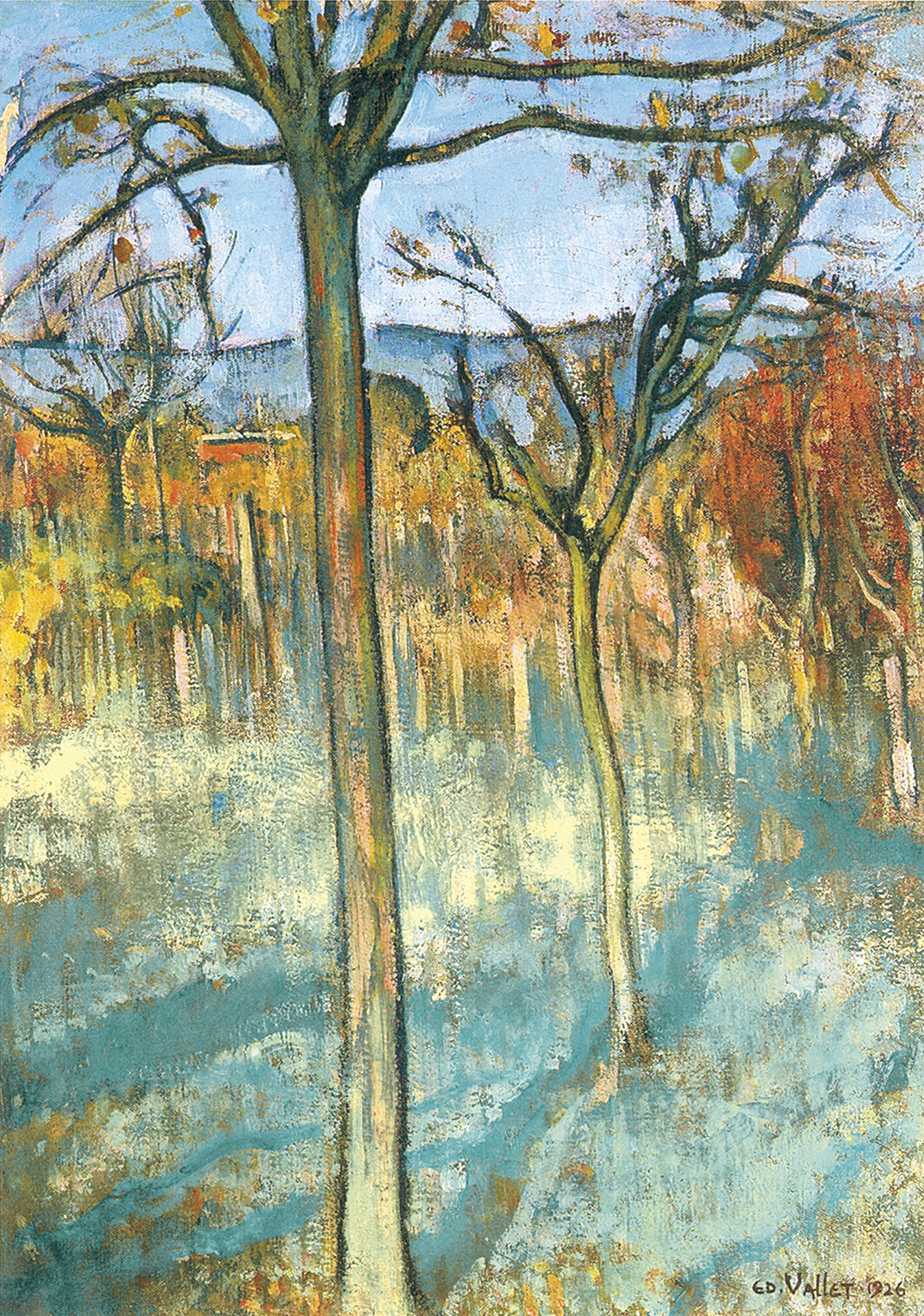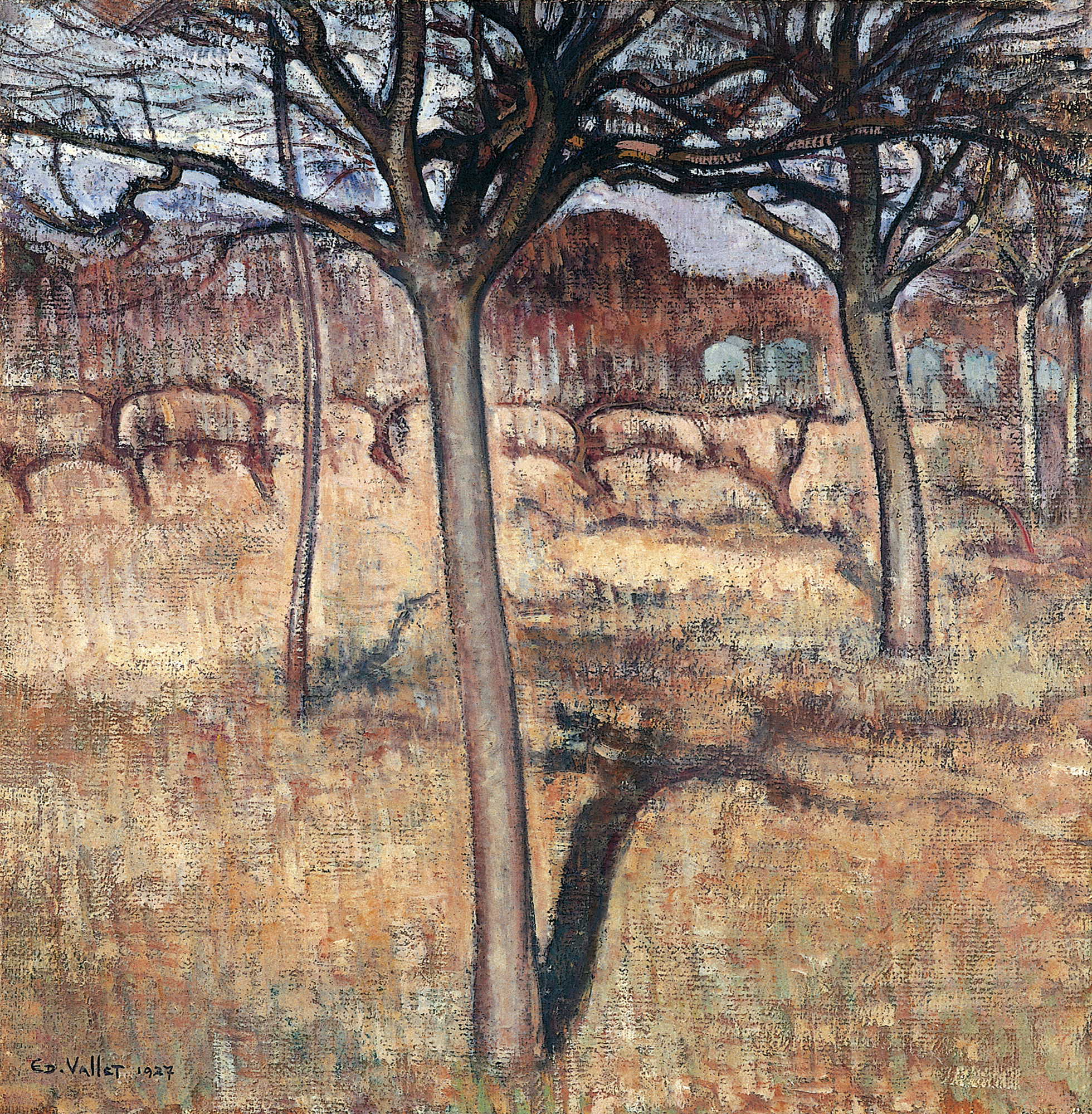A major representative of Swiss art at the turn of the 20th century, Édouard Vallet is born in Geneva in 1876. He studies at the city’s School of Industrial Arts, taking classes as well at the School of Fine Arts in the studios of Barthélemy Menn, Barthélemy Bodmer and Pierre Pignolat. Vallet leaves these institutions before obtaining a diploma, however, and begins a career as an illustrator, notably for the Geneva publisher and bookseller Charles Eggimann and the satirical review Passe-Partout.
He will later make a living doing woodcut engraving, a practice that earns him a special award at the 1900 Paris World Fair. He travels to Paris in 1905 and then to the great cities of Italy before returning to settle in Geneva.
In late January 1908, he discovers the village of Hérémence and immediately Valais becomes a land dear to his heart. He will stay there on and off over the last twenty years of his life. Thus, after painting views of Geneva – the market in Carouge, the lanes of the old town, the surrounding countryside – the artist developed a life-long passion for the landscapes and inhabitants of Valais. The discovery of the region marks a true upheaval in the evolution of his art.
Stylistically, his work at first takes its place in the legacy of Ferdinand Hodler. His vocabulary then finds its unique tone thanks to his pictorial exploration of Valais. Through the use of dry painting, Vallet obtains velvety and matt finishes whose luminosity verges at times on the effects achieved with pastel. Iconographic influences, of Jean-François Millet and Giovanni Segantini, for instance, can also be seen in his painting.
Awarded two gold medals in Munich (1909 and 1913), he mounts important solo shows in galleries in Zurich and Geneva. His works are now found in most Swiss museums and prestigious private collections.
He will later make a living doing woodcut engraving, a practice that earns him a special award at the 1900 Paris World Fair. He travels to Paris in 1905 and then to the great cities of Italy before returning to settle in Geneva.
In late January 1908, he discovers the village of Hérémence and immediately Valais becomes a land dear to his heart. He will stay there on and off over the last twenty years of his life. Thus, after painting views of Geneva – the market in Carouge, the lanes of the old town, the surrounding countryside – the artist developed a life-long passion for the landscapes and inhabitants of Valais. The discovery of the region marks a true upheaval in the evolution of his art.
Stylistically, his work at first takes its place in the legacy of Ferdinand Hodler. His vocabulary then finds its unique tone thanks to his pictorial exploration of Valais. Through the use of dry painting, Vallet obtains velvety and matt finishes whose luminosity verges at times on the effects achieved with pastel. Iconographic influences, of Jean-François Millet and Giovanni Segantini, for instance, can also be seen in his painting.
Awarded two gold medals in Munich (1909 and 1913), he mounts important solo shows in galleries in Zurich and Geneva. His works are now found in most Swiss museums and prestigious private collections.
